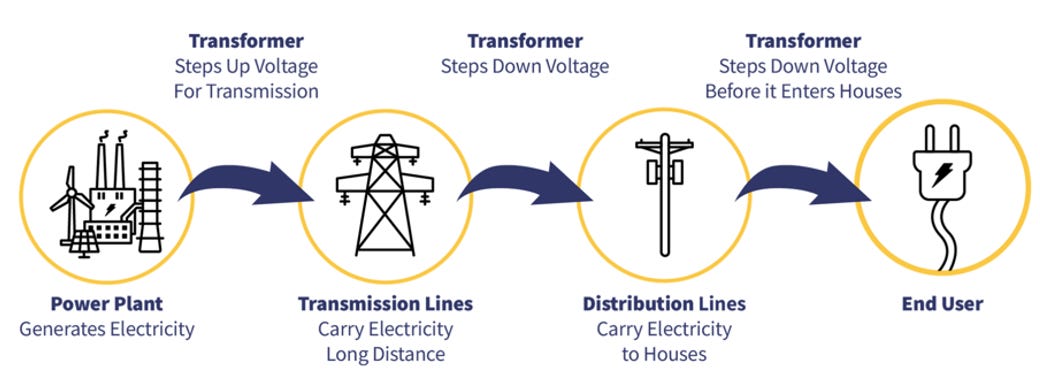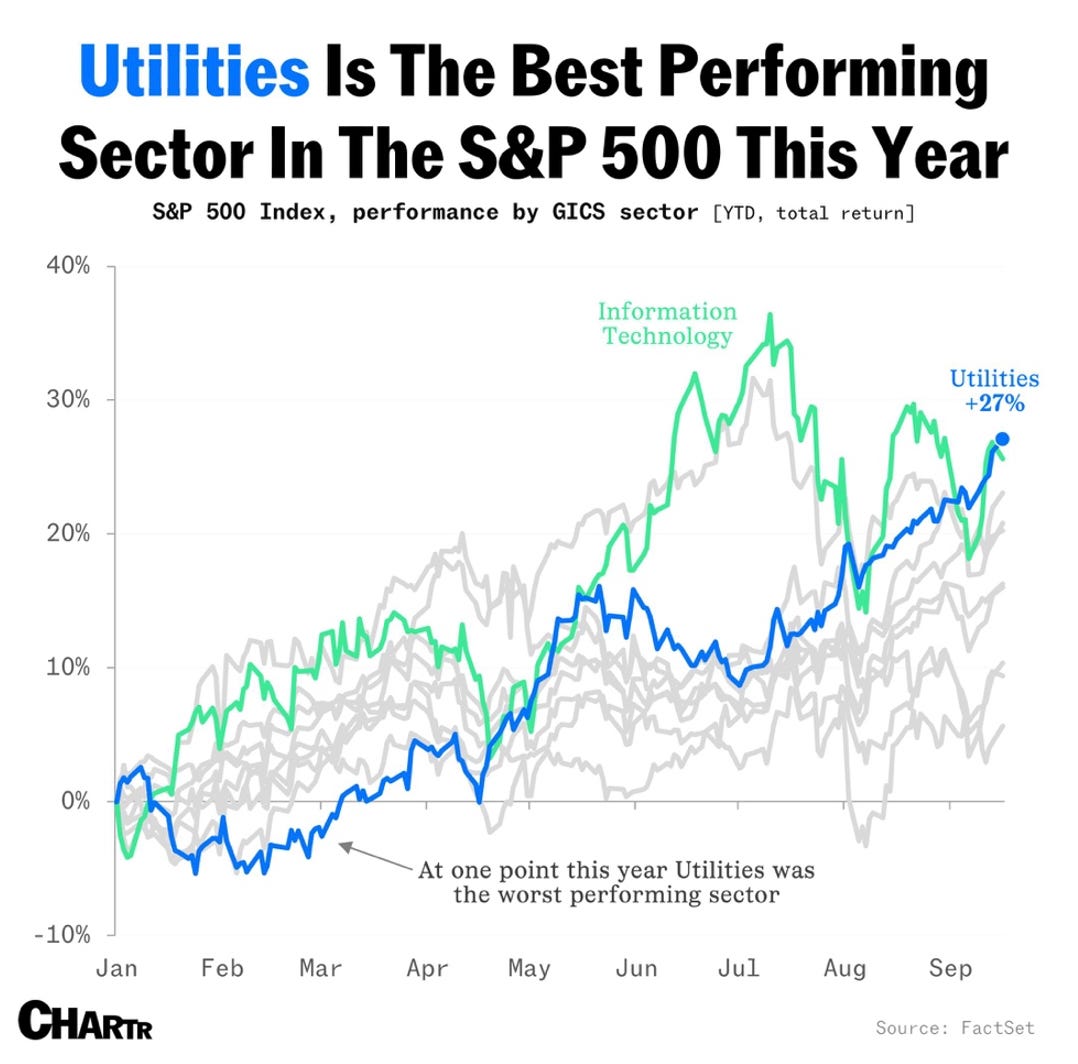OCTOBER ISSUE – Two Major Utilities Powering the Energy Transformation
This monthly issue explores two of the industry leaders driving forward the energy transition.
“Electricity is really just organized lightning.” - George Carlin
Welcome to all of our new subscribers! I want to express my gratitude to those of you who have been with us from the beginning. Your trust and support is why we do what we do.
This month, we are considering the companies powering for our daily lives. You write checks to them each month. They aren’t overly exciting. Investing in them won’t provide NVIDA-style annual returns. But you can’t function without them.
That’s why Prinsights Premium is exploring two key energy utility companies this month.
Energy utility companies can focus on the transmission, distribution and generation of electric power.
Energy generation can come from a range of sources, including natural gas, hydropower, solar, wind, coal, nuclear and others. Energy is then transmitted through pipes and wires (often massive transmission systems) from those generative sources and distributed to homes, large-scale commercial enterprises, public spaces and critical infrastructure locations.
This year, energy utilities have also been a top-performing sector in the market.
Here’s what you need to know and why we expect this trend to continue.
Data Centers Are Big and Spreading
After flatlining for two decades, U.S. electricity consumption sprouted again in 2021. Much of that increase came from the manufacturing sector, along with a massive demand from tech firms and their exponential data needs.
The Electric Power Research Institute (EPRI) reports that data centers could consume up to 9% of U.S. electricity per year by 2030. That‘s more than double the 2023 total load of 4%. That’s like plugging an extra 11 million homes into the power grid.
Data centers store, process and use data for AI and other applications. One ChatGPT query requires 2.9 watt-hours of electricity. That’s ten times what a Google search takes.
What that means is that the story of AI will be the story of electric power. Without significant investment and development of power infrastructure, the true potential of AI both for the public and private sector cannot be accomplished.
But it’s not just AI driving electricity demand. Every demanding online interaction, from streaming, online meetings, intensive gaming, financial payments, GPS, and ride sharing apps – all require high energy demands from the servers they use.
Big Tech Goes Nuclear to Meet Clean Energy Goals
The U.S. Department of Energy (DOE) expects U.S. current electricity demand to double by 2050. The net-zero emissions goal is a contributing factor. Tech giants like Amazon, Meta, Microsoft, Alphabet (Google) and Apple all have sweeping climate plans, with many placing an emphasis on having zero emissions. Energy generation from solar, wind, hydro, geothermal, and nuclear are all ways to meet the growing demand coming from data centers. Big Tech also knows this.
That’s why Microsoft penned a massive deal with the largest energy generation company in the U.S., Constellation, to re-open its three-mile island nuclear plant so Microsoft can secure power for its data centers. Shares of Constellation Energy Corp. are up 130% this year (we alerted readers to Constellation months ago in this video here).
Southern Company has also reopened commercial operations of its marquee Vogtle Nuclear Power Plant in Georgia. Vogtle is now the largest nuclear power site in the U.S. through Southern’s operating company, Georgia Power. The company already expects 80% of new customer demand to come from data centers.
Now, other utilities are considering reopening nuclear plants in response.
All this demand is sending utility stocks soaring. Some are poised to continue this trend more than others (as we’ll detail in the analysis below).





